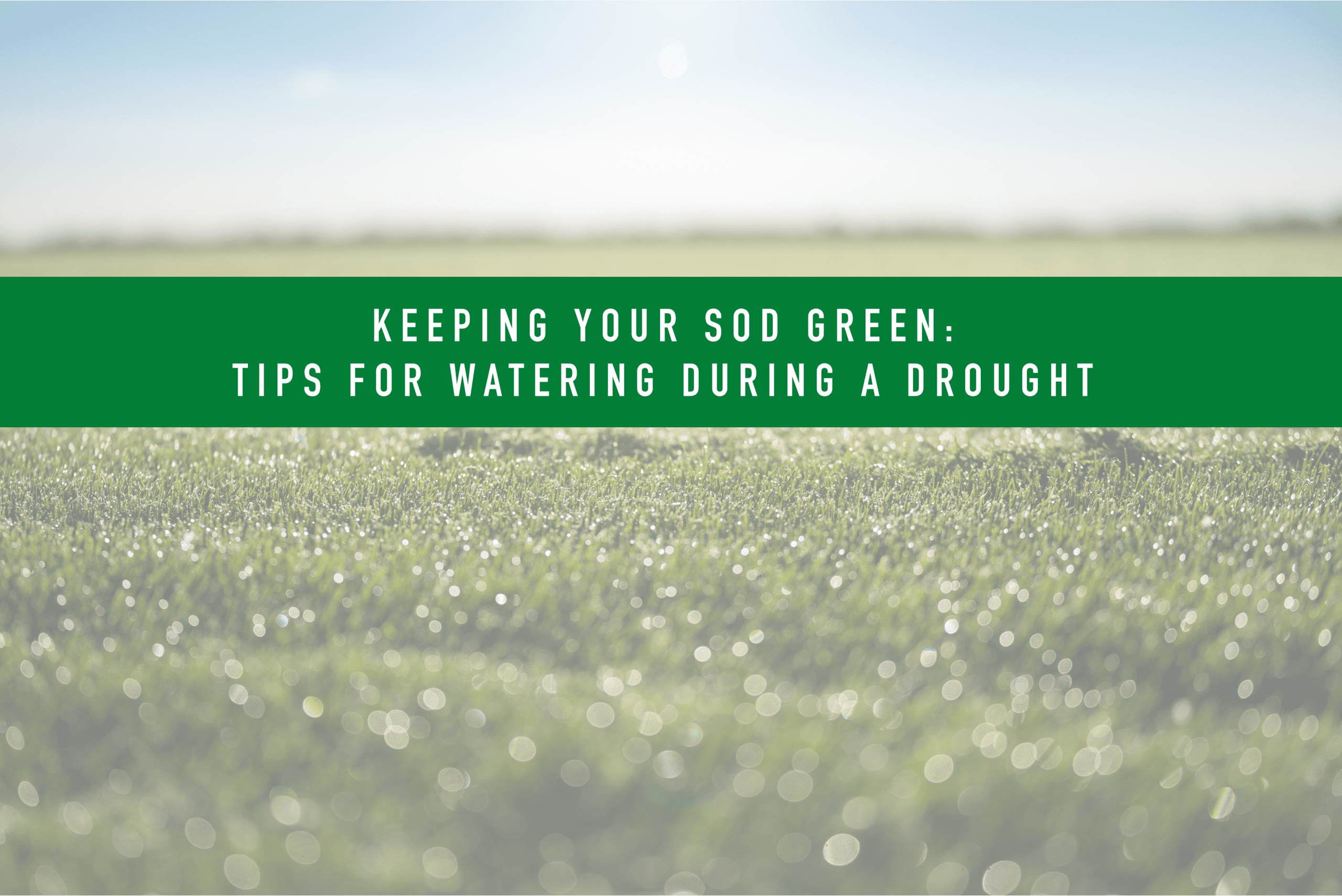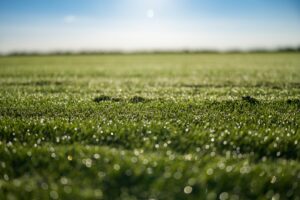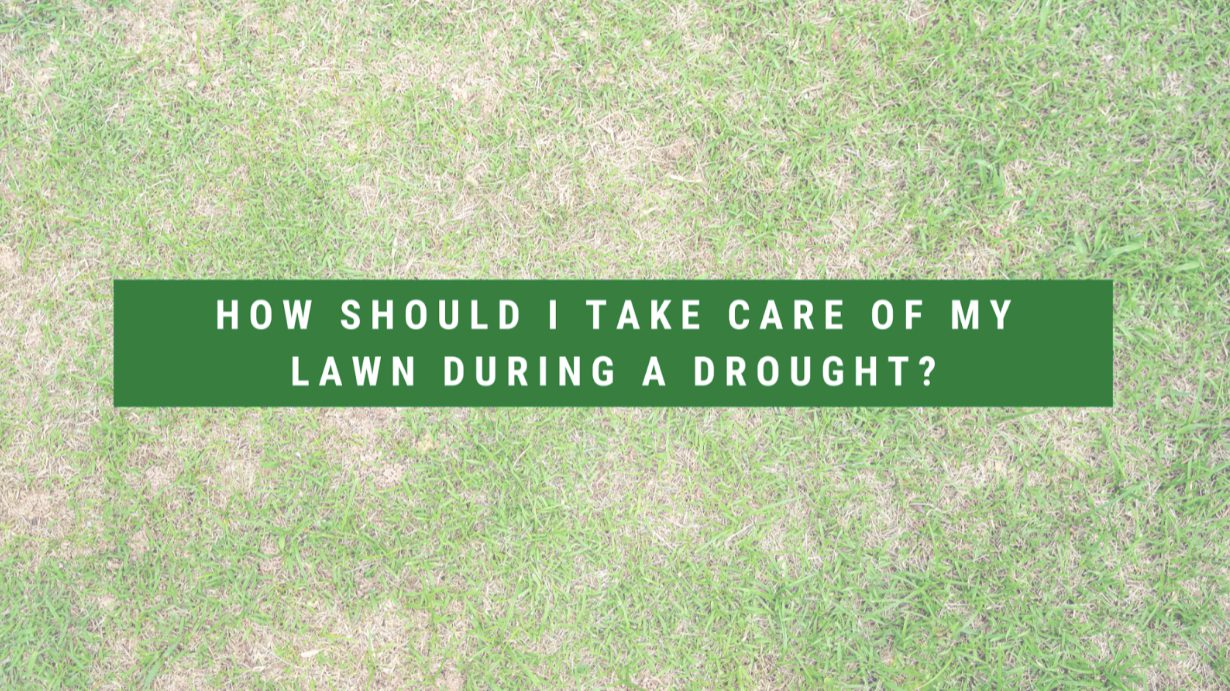B&B Hoffman Sod’s Guide to Beating the Heat and Saving Your Lawn
It’s July. It’s hot… and your brand-new sod is thirsty. But with rising temps and the occasional watering restriction, keeping your lawn alive (without blowing up your water bill) can feel overwhelming. Don’t worry, B&B Hoffman knows all about how to water new sod in hot summer weather, avoid heat stress, and stick to an efficient watering schedule that keeps your lawn lush and healthy.
How to Water New Sod Without Wasting Water
New sod in July is gorgeous to look at, but it also needs a lot of attention. And while adequate watering is crucial in the first few weeks, there’s no need to turn your lawn into a swamp. We’re sharing our best tips to keep your lawn looking its best without wasting water or blowing your monthly budget. You’re going to need an alarm clock (or an automatic timer) and a tuna can (yes, really), but you’ve got this!
💧 Smart Watering Tips:
- Water Early*: Start watering at 4 AM and be done watering by 9 AM. Cooler temps = less evaporation and less chance of disease.
- Use a Timer or Smart Irrigation Controller: Automated watering ensures consistent coverage without forgetting or overdoing it. (And you can skip the 4 AM alarm clock!)
- Water Deep: Aim for a solid soak, not a light sprinkle. This helps roots reach down for moisture and builds drought resistance. One long watering in the morning is better than several short waterings throughout the day.
- Avoid Making Pools: If water pools or runs off before it soaks in, split watering into two shorter cycles, 30 minutes apart.
*In areas with water restrictions, check with your city! They often allow new sod exceptions with a permit or temporary variance.
What Heat Stress Looks Like (And How to Fix It!)


If your new lawn starts looking a little crispy, don’t panic! Summer heat is no joke, and sod can show signs of heat stress if it’s under-watered or over-exposed.
⚠️ Signs of Heat Stress in Sod:
- Gray or dull blue-green color
- Wilted or rolled blades
- Footprints stay visible after you walk on it
- Dry, crunchy texture when you touch the blades
- Gaps at the seams between sod pieces due to shrinkage (these gaps will not go away, you want to prevent this with diligent watering)
Quick Fixes:
- Water immediately and deeply! Soak about 1/2 inch of water on the affected area. Watering hack: To make sure you’re actually using enough water, use a tuna fish or cat food can to gauge the amount of water getting into your lawn! (We told you you’d need a tuna can!)
- Stay off the lawn until it perks back up.
- Avoid mowing until the sod recovers.
- Resume regular watering schedule once color and texture normalize.
Pro tip: Lift a corner of your sod—if the roots haven’t started grabbing into the soil underneath by Day 7–10, it needs more hydration!
Week-by-Week Watering Schedule for July Sod Installation
On days with 🔥HOT🔥 temperatures, be sure to lay your new sod on the day of delivery. Once your sod is installed, consistency is key! Here’s a general watering plan for new sod in the middle of summer:
💧 Week 1: Establish Moisture
- Water immediately during installation. Water more than you think you need.. Water so much that water has penetrated through the grass and has saturated the ground underneath.. Water until your lawn is bog-like. And for good measure, give it one last little drink of some more water.
- Keep the top 1–2 inches of soil consistently moist.
- Avoid walking on the sod while roots are settling in.
💧 Week 2: Start Deep Watering
- Water once daily, preferably in the morning.
- Each session should soak 6–8 inches deep.
- Roots should start establishing and grabbing hold. (See pro tip above – if you can lift a corner of the sod, water more!)
💧 Week 3: Transition to Normal Schedule
- Water every other day, depending on rainfall and heat.
- Keep an eye out for stress signs like wilting or discoloration.
- Mow only when the sod is rooted and 3–4 inches tall, and never remove more than 1/3 of the blade at once.
💧 Week 4 and Beyond: Maintenance
- Water 2–3 times per week, depending on the weather.
- Early morning watering is still best.
- Fertilize only if recommended and avoid applying during high heat.
It’s All About Balance
New sod in summer heat requires attention, timing, and a little TLC, but it’s absolutely doable (and totally worth it!). At B&B Hoffman Sod, we grow our premium Kentucky Blue Grass to be as tough as it is beautiful, so it’s ready to root and thrive when you plant it! With smart watering and a watchful eye, your new lawn will beat the heat and thrive all season long.
Need Sod This Summer?
B&B Hoffman Sod grows our premium Kentucky bluegrass locally, cut it fresh, and have it ready to take root on your lawn! Call us at 763-434-6572 for tips, orders, or questions about watering, installation, and lawn care.



